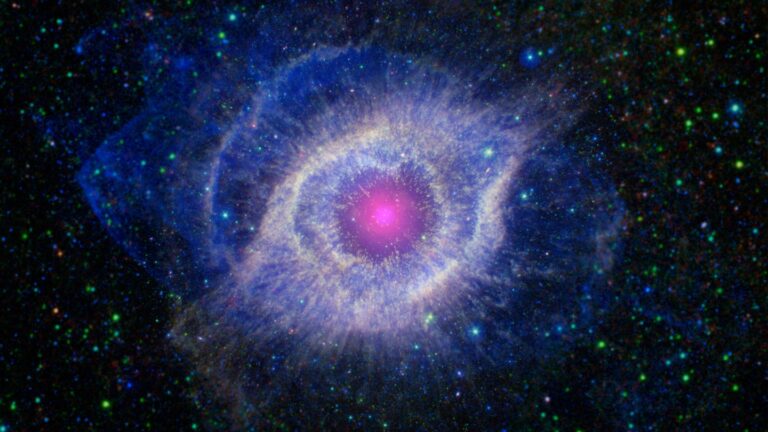astrophysicist: A scientist who works in an area of astronomy that deals with understanding the physical nature of stars and other objects in space.
autonomous: Acting independently. Autonomous vehicles, for instance, pilot themselves based on instructions that have been programmed into their computer guidance system.
constant: Continuous or uninterrupted.
debris: Scattered fragments, typically of trash or of something that has been destroyed. Space debris, for instance, includes the wreckage of defunct satellites and spacecraft.
disk: A round, flat and usually fairly thin object. (in astronomy) A rotating cloudlike collection of gases, dust or both from which planets may form. Or the structure of certain large rotating bodies in the cosmos, including spiral galaxies.
helix: An object with a three-dimensional shape like that of a wire wound uniformly in a single layer around a cylinder or cone, as in a corkscrew or spiral staircase.
light-year: The distance light travels in one year, about 9.46 trillion kilometers (almost 6 trillion miles). To get some idea of this length, imagine a rope long enough to wrap around the Earth. It would be a little over 40,000 kilometers (24,900 miles) long. Lay it out straight. Now lay another 236 million more that are the same length, end-to-end, right after the first. The total distance they now span would equal one light-year.
matter: Something that occupies space and has mass. Anything on Earth with matter will have a property described as “weight.”
nebula: A cloud of space gas and dust existing between major adult stars. Telescopes can detect these clouds by the light they emit or reflect. Some nebulas also appear to serve as the nurseries in which stars are born.
observatory: (in astronomy) The building or structure (such as a satellite) that houses one or more telescopes. Or it can be a system of structures that make up a telescope complex.
planet: A large celestial object that orbits a star but unlike a star does not generate any visible light.
planetary nebula: A shell of gas ejected from stars like our sun at the end of their lifetimes. This gas continues to expand away from the remaining star (a white dwarf).
radiation: (in physics) One of the three major ways that energy is transferred. (The other two are conduction and convection.) In radiation, electromagnetic waves carry energy from one place to another. Unlike conduction and convection, which need material to help transfer the energy, radiation can transfer energy across empty space.
red giant: A star having a large diameter and relatively cool surface. It is a stage in a normal star’s life that occurs after it has stopped burning hydrogen. A red giant has a core in which helium is fusing into carbon.
solar system: The eight major planets and their moons in orbit around our sun, together with smaller bodies in the form of dwarf planets, asteroids, meteoroids and comets.
star: The basic building block from which galaxies are made. Stars develop when gravity compacts clouds of gas. When they become hot enough, stars will emit light and sometimes other forms of electromagnetic radiation. The sun is our closest star.
transition: The boundary where one thing (paragraphs, ecosystems, life stage, state of matter) changes or converts into another. Some transitions are sharp or abrupt. Others slowly or gradually morph from one condition or environment to another.
white dwarf: A small, very dense remains of a star that is now the size of a planet. It is what is left when a star with a mass about the same as our sun has exhausted its nuclear fuel of hydrogen and cast off its outer layers.
X-ray: A type of radiation analogous to gamma rays, but having somewhat lower energy.


